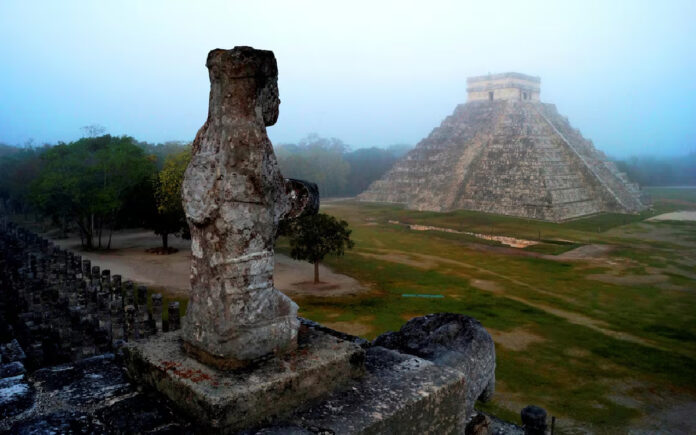New York: In 1967, archaeologists unearthed an underground cistern, or chultun, near a sacred cenote at Chichen Itza, a prominent ancient Maya city on Mexico’s Yucatan peninsula. Inside were skeletal remains of over 100 children, shedding light on the practice of child sacrifice in the centuries before European contact. Now, DNA analysis of 64 of these remains has provided new insights into these ancient rituals.
The findings, detailed in a study published in the journal Nature, reveal that the children interred in the chultun were all boys, primarily aged between 3 to 6 years old. Among them were two sets of identical twins, highlighting the significance of twins in Maya religious beliefs and mythology, particularly in stories such as those found in the Popol Vuh about the Hero Twins, Hunahpu and Xbalanque.
According to lead author Rodrigo Barquera, an archaeogeneticist from the Max Planck Institute for Evolutionary Anthropology (MPI-EVA) in Germany, “Ritual sacrifice was a common practice among ancient Mesoamerican populations. However, the biological relationships between the sacrificed individuals had not been described before.”
Barquera further explains, “We think that the people from Chichen Itza were trying to symbolically replicate the Mayan mythological stories and the representation of the twin heroes in this ritual burial. For Maya, and Mesoamerican cultures in general, death is the ultimate offering, and as such, sacrifices bear high importance to their belief system.”
Chichen Itza is renowned for its architectural marvels, such as El Castillo pyramid, and its sacred cenote where the bodies of over 200 individuals were discovered. Adjacent to this cenote, the chultun served as a burial site, repurposed from its original function as a water storage chamber.
DNA extraction from the petrous portion of the temporal bone, known for its excellent preservation of ancient DNA, allowed researchers to analyze genetic similarities among the individuals. Kathrin Nägele, an archaeogeneticist at MPI-EVA and co-author of the study, notes, “From the genetic similarities of two individuals, we can calculate the degree of genetic relationship. In this case, we found two pairs who were so similar they could only be identical twins.”
The research challenges previous notions that Maya sacrificial preferences favored females and provides insights into genetic traits among modern Maya communities, indicating adaptations to historical epidemics.
While the exact cause of death remains unclear, the study underscores the complexity and significance of Maya ritual practices, which faced suppression during the Spanish colonial period. Co-author Christina Warinner from Harvard University emphasizes, “Human sacrifice remains one of the most misunderstood ritual acts among the ancient Maya.”



